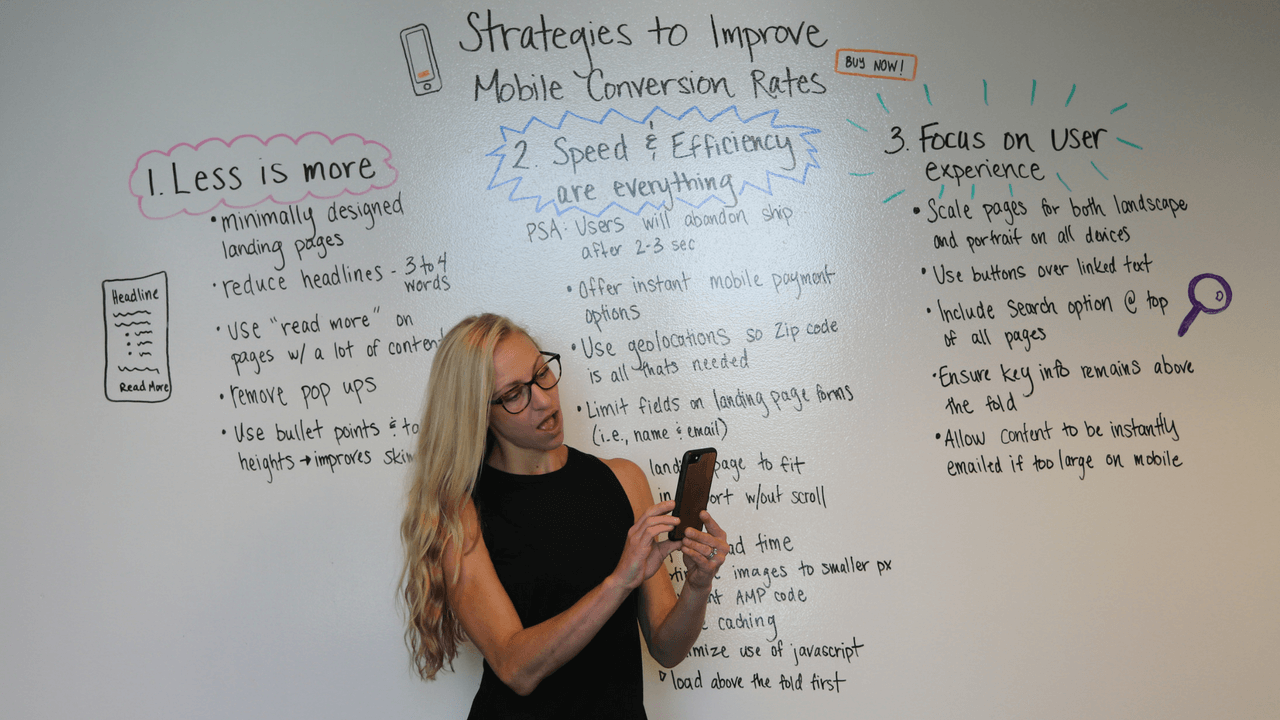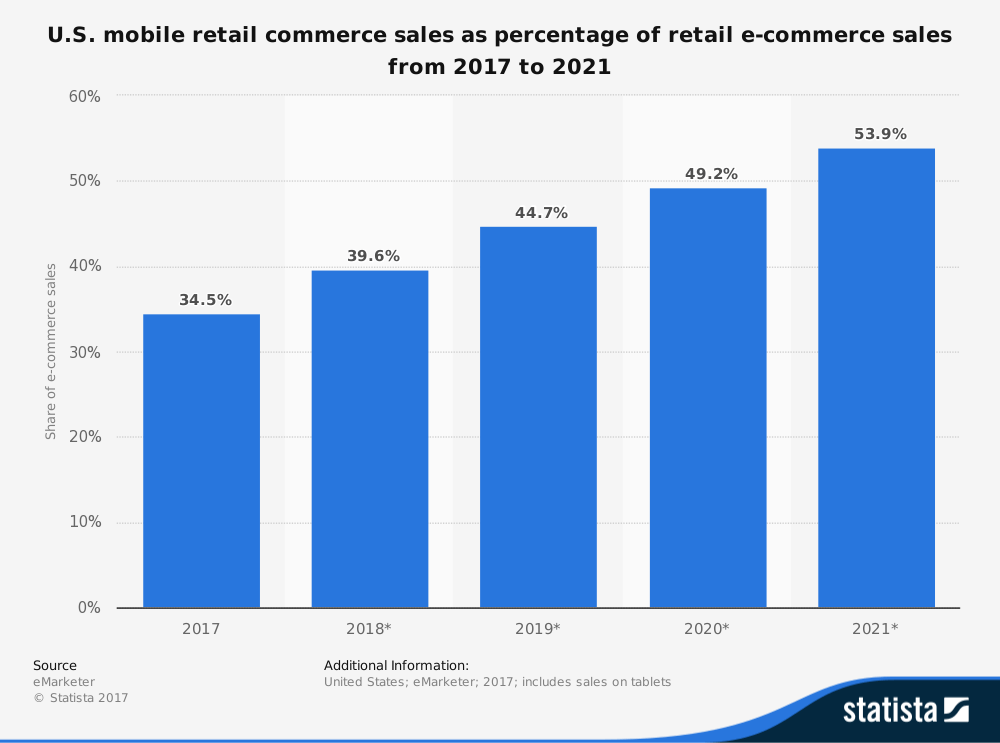Mobile Conversion Optimization: Strategies for Increasing Mobile CRO
Converting visitors on your mobile webpage into customers can be a challenging process. In fact, mobile conversion rate optimization is one of the...
I know what I am looking for, and would like to chat.
A team of data-driven marketers obsessed with generating revenue for our clients.
Because the proof is in the pudding.
At Campaign Creators we live by three principles: Autonomy, Mastery, Purpose.

Research shows that in recent years the percentage of mobile internet traffic has been growing significantly all over the world. This trend is only going to continue, which is why it is critically important for every business to master mobile marketing.
From this article, you will learn about five innovative ways to market your business to the users of mobile devices.
CPV is short for cost-per-view. CPV is the default model in video advertising. Some platforms also use it for banners and regular ads.
As the percentage of mobile users of the Internet grows, people are watching more and more video on their mobile devices, which is why online video is becoming an important marketing channel both for business and advertising platforms, including giants such as YouTube, Twitter, Snapchat, and Facebook.
One of the issues with the mobile online video advertising is that it has to be short because people are often checking their mobile devices on the go and don’t have much time to watch a long ad or read a long message. This is one of the reasons why major platforms have been testing how short videos can be to still be effective. Both Facebook and YouTube have been testing videos that are as short as 6 seconds.
YouTube showcased its six-second video format in the January of 2017 during Sundance Film Festival in Park City, Utah. Attendees of the festival were able to see ads both from up-and-coming filmmakers and from established creative agencies.
With CPV video ads, you pay only when somebody watches your ad. Different platforms have different rules about what counts as a view. For example, with long video ads, YouTube counts as a view when a user watches an ad for 30 seconds or more. With regular ads, a CPV model counts as a view when somebody loads a page with your ad. The difference between the CPV model for regular ads and CPV model for video ads is that CPV views for the video ads have to be interactive. A user has to watch your ad for a view count as a view, while with a regular ad a user may not even pay attention to an ad.
To buy CPV ads, you can use AdWords for video if you want to advertise on YouTube, and Facebook ad manager for placing your ads on Facebook. Snapchat and Twitter also give you an opportunity to create, load and manage video ads. To publish static ads, you can use of native advertising networks such as Taboola.
SEM is short for search engine marketing. When marketing your business for mobile search engine users, you need to keep several things in mind. First, mobile devices come with a variety of software platforms and screen sizes. When optimizing a website for desktop computer viewing, you had to deal with just a few standard screen sizes and resolutions and several major software systems. This is not the case with mobile search engine marketing, which is why you need to make sure that your website will work with various screen sizes and software platforms. Some of the major mobile platforms do not support Flash. This is the reason why you should not be using Flash on mobile websites.
The next important issue is the issue of page loading speed. Mobile users may not have excellent Internet speed, which is why search engines reward websites that load quickly by showing them high in their rankings.
Just like slow-loading websites, pop-up windows are not a smart way to go with mobile websites because it may be very hard to close a pop-up window on a small screen. This may lead to high bounce rates and low visitor engagement.
PPC, or pay-per-click marketing, is the way how companies like Google and Facebook bring in a significant portion of their revenue. To advertisers, PPC offers a number of advantages. The first advantage is speed. You can create a text ad on Google AdWords and quickly see if your prospects and customers start clicking on it. This is a great way not just to get new customers, but also to test various ideas, product names, concepts, and approaches. On Facebook, you can use the same approach and include images. By using images you can find what visuals your prospects and customers have when it comes to your products and services and what images work best.
Another benefit of pay-per-click advertising is that you are fully in control of what is happening with your ads. For example, you can schedule your ads to run only in the morning or during lunchtime, when you know that your prospects are likely to order from you. If you know that your customers mostly buy from you on work days, you can simply shut off you advertising on weekends. You are also fully in charge of how much you are spending on your ads. If all you have is $10/day, you can set your budget equal to this amount and your ads will stop running once the bill for the day reaches $10.
Finally, pay-per-click advertising is very transparent and makes it easy to calculate how much it costs you to acquire a customer. You will immediately see how much clicks are costing you. Most platforms reward advertisers that create relevant ads. This means that if a significant percentage of your target audience thinks that your ads are relevant, your price per click is going to be lower for that particular keyword, image or ad.
More and more people today are visiting websites and searching for information on the go. This is a good news because you can show your ads to people more often and make your business look and feel very familiar to people. Showing your ads more often also means more opportunities for getting a response.
The bad news about increased mobile traffic is that people on the go are pre-occupied with a lot of things and you can have their attention for only a short period of time. For this reason, having your prospects to give you their email and then following up with them by email is still a very effective strategy. You can create follow-up funnels and deploy them using auto-responders and campaign management software.
The key to success is omnipresence and integrated marketing campaigns. You want your target audience to see you everywhere, including Facebook, websites they visit and their mailbox. Most platforms have targeting options that allow you to accomplish that, which is why you can show a lot of ads and send a lot of messages to an audience, yet still do it in a cost-effective way.
Ringless voicemail or RVM is a technology that allows you to send voicemail messages without actually calling anyone. RVM providers dial business phone lines of cellular phone service providers and deliver messages via a landline. The cellular phone provider then moves the message to the mailbox of the customer and sends a notification about the message to the phone. This way, there is no phone call, no charges to the customer, and no interruptions.
For these reasons, ringless voicemail is not regulated by the same laws that regulate telemarketing. Most people listen to all of their voicemails, which is why ringless voicemail can be very effective and has very high conversion rates.
It combines the benefits of calling someone on the phone with automation of sending an email. With ringless voicemail, you can record a message once, upload it to the website of the RVM service provider and send it to many customers or prospects at once.
There is a number of ways for a business to use ringless voicemail effectively. You can use ringless voicemail to inform your customers about your new offerings. You can also send reminders about appointments and materials that your prospects and customers get via other channels. For example, if you use direct mail to send information to your prospects, you can use ringless voicemail to send a message that a package is on the way in the mail.
We hope our guest author Katrina gave you a few ideas to jump start your mobile marketing strategy this year. For even more lead generation strategies download our [guide] The 30 Greatest Lead Generation Tips, Tricks and Ideas.
Katrina Manning is a content marketing specialist who has penned thousands of articles on business, tech, lifestyle and digital marketing for a wide variety of global B2B clients. She mostly writes for www.leadpath.com and she is also the author of three books and is currently working on her fourth. In her free time, she enjoys fundraising for charitable causes, playing with her cat and baking.

Converting visitors on your mobile webpage into customers can be a challenging process. In fact, mobile conversion rate optimization is one of the...

The ritualistic Black Friday shopping mayhem appeared a bit less apocalyptic last year. While initially this observation may suggest an economic...